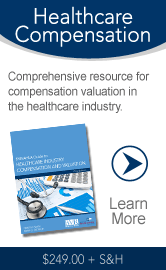 |
 |
Issue #21-1 | February 13, 2014

| New court ruling may dampen hospital M&As
Antitrust scrutiny on hospital acquisitions is likely to intensify in the wake of a court ruling that KO’d a health system’s acquisition of a physician group. Market grab: A U.S. district court ordered St. Luke’s Health System (Boise, Idaho) to undo its acquisition of the Saltzer Medical Group (Nampa, Idaho), the state’s largest independent, multispecialty physician group. The Federal Trade Commission claimed the deal would lessen competition in the area and lead to higher healthcare prices and costs for consumers, insurers, and employers. Attorneys for St. Luke's countered that the acquisition would improve patient care and give consumers more options. Winmill said in his ruling that, while it may not have been the goal of the acquisition, it "appears highly likely that health care costs will rise as the combined entity obtains a dominant market position that will enable it to (1) negotiate higher reimbursement rates from health insurance plans that will be passed on to the consumer, and (2) raise rates for ancillary services (like x-rays) to the higher hospital-billing rates." Dr. David Pate, president and CEO of St. Luke's Health System, says in his blog, “We will review the judge’s findings and conclusions and anticipate appealing the decision.” Healthcare M&A activity, now tepid, is expected to reboundYear-end M&A activity in healthcare is typically hectic, but this past December was “something of a snoozer” compared with the year before, according to a report from Irving Levin & Associates. Overall deal volume dropped 21% compared with December 2012. Although the technology sector—and pharmaceuticals in particular—had a better month in 2013 (up 24% from last year), deals in the services sector cratered (down 45%). Mood will change: Another analysis, from PCE, reports that every subsector of healthcare experienced a drop in M&A transaction volume in the fourth quarter of 2013 except equipment and supply. However, things are expected to change. The analysis states: “Most M&A professionals involved in the healthcare industry attribute the 2013 year end ‘wait and see’ mood to the anticipation and uncertainty of the rollout of the ACA compounded by the Federal government’s divisive decision budget making malaise. The ACA has now been launched, Washington budget policymaking appears to be recovering and the public equity markets are at record highs, so the tentativeness toward M&A and investing in this sector is expected to dissipate in 2014.” The analysis also found that, despite recent widespread compression in the profitability (gross margins and EBITDA margins), the “total enterprise value” of public companies across the healthcare industry continues to increase. Readmission penalties proposed for home health providersHome health providers with relatively high rates of hospital readmissions will get hit with Medicare reimbursement penalties starting in fiscal year 2015, if recommendations from MedPAC are adopted by Congress. Hospitals are already penalized under the Affordable Care Act for having high readmission rates, and penalties are now being proposed for skilled nursing facilities. MedPAC feels that home health providers should be included here as well. Reducing avoidable hospital readmissions is one of the key ways to lower costs and improve care quality. Coordination of care: The goal here is to promote a partnership between hospitals and home health providers to improve the coordination of care after the patient is discharged from the hospital. Hospitals say they have no control over what happens after a patient is discharged to a post-acute care facility, so they shouldn’t be penalized for a readmission. If home healthcare providers have their Medicare payments tied to readmission rates, it would help to eliminate this problem. Five risk factors that affect the value of an imaging centerThe current success of the imaging center industry has triggered increased acquisition of controlling interests in these entities by the operators. “Through our experience in the industry, we have observed that imaging-center operators typically pay a multiple of approximately four to five times a normalized level of EBITDA for a controlling interest,” writes Eric Heath (VMG Health) in an article in Imaging. VMG is a national healthcare transaction advisory and valuation company. Of course, these multiples will vary depending on the specific transaction. “The marketplace typically relies much more heavily upon EBITDA value indications (as opposed to net revenue) because a center’s EBITDA serves as a more accurate proxy for future cash flows than does revenue,” says Heath. Five primary categories of risk factors can drive the fair market value of an imaging center toward the lower or higher end of the range of acquisition multiples. These are market, operational, equipment, referring-physician, and reimbursement risk factors. 1. Market risk factors. Favorable market risk factors include the existence of a certificate of need, favorable patient demographics, and high historical population growth. 2. Operational risk factors. These include historical profitability, ability to sustain or grow profitability, and the center’s level of debt obligations. 3. Equipment risk factors. The age and condition of equipment, the level of technology of equipment, equipment capacity, and equipment location are the main factors here. 4. Referring-physician risk factors. These include the concentration of referral sources, ability to show growth in the number of referring physicians, practice expansion of major referral sources, and employment of referring physicians by local hospitals. 5. Reimbursement risk factors. The concentration of payors, reliance upon Medicare and Medicaid, and historical reimbursement growth can vary widely, so they need to be carefully considered. The author says his firm has observed imaging centers with fair market value indications of less than four times EBITDA, as well more than five times EBITDA, depending on the above risk factors associated with the subject center. Metrics for inpatient hospitalization costsMost of the spending on inpatient hospital services fall into five categories: maternal/neonatal, mental health, injury, surgical, and medical. The Agency for Healthcare Research and Quality and its Healthcare Cost and Utilization Project issued a report that projected the cost of inpatient hospitalizations. Here are historical and projected cost metrics for the five categories:
Average profit rises at community hospitals Community hospitals in the U.S. posted $64.4 billion in cumulative profits in 2012, a 21% increase from 2011, reveals the American Hospital Association's 2014 edition of AHA Hospital Statistics. The smallest community hospitals (those with 6 to 24 beds) had an average profit of $1.3 million in 2012, while the largest (those with 500 beds or more) pulled in an average profit of $67.8 million. Here’s the full breakdown:
Tighten email controls and save Healthcare providers can save a huge amount of money by tightening policies and procedures concerning email, according to a research letter published in the Journal of the American Medical Association Pediatrics. In addition to the high financial costs, emails can trigger a significant loss in doctor productivity. As part of their research, Ian Paul, M.D., and Benjamin Levi, M.D., Ph.D., both of the Penn State College of Medicine, examined how long it would take to go through more than 2,000 mass emails Paul received during the 2009-2010 academic year. They translated this into dollars, based on a mean salary of $231,612. They found that, if a doctor spent 30 seconds reading each email, the cost per physician to read mass distribution emails was $1,641 per year. That cost jumps to $4,923 per year if the doctor took 90 seconds per email. They multiplied this cost times the number of physicians at their institution (629) to get a total cost that ranged from $1,029,419 to $3,088,257—all from reading emails. What to do: To save both time and money, the authors suggest that organizations:
New resources for healthcare finance execsBVR’s Healthcare Industry Finance and Value Resource Center has added several new resources to its roster of sources for news, analysis, and tools related to every aspect of value and financial leadership in the healthcare industry. The new resources, from the Healthcare Intelligence Network (HIN), are:
|
|
||||||||||||||||||||||||
1000 SW Broadway, Suite 1200, Portland, OR 97205
(503) 291-7963 | editor@bvhealthcarenews.com
www.BVResources.com/healthcare

